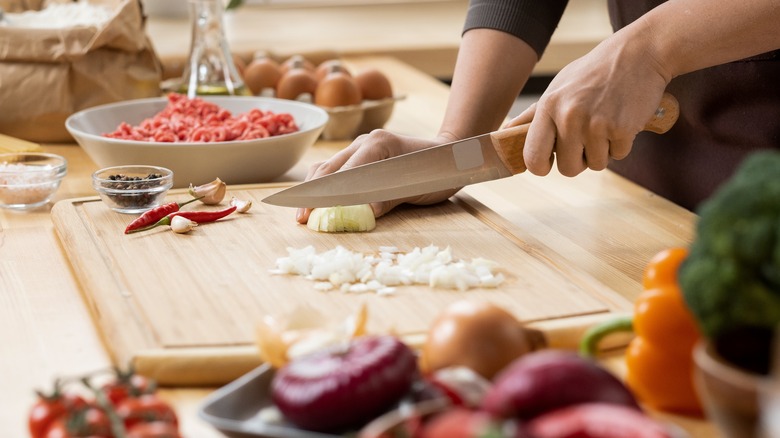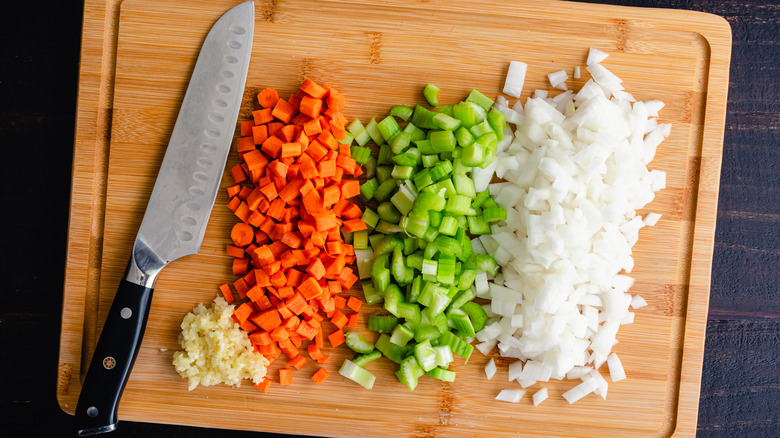The Biggest Difference Between Dicing And Chopping
There are many reasons why chefs spend so much time perfecting their knife skills. In fact, they are even tested on their knife cutting skills in culinary school. Is there a method to the madness and does it even really matter? There are absolutely times when you can get away with a chop instead of a dice and vice versa, but there is, in fact, usually a reason why the recipe developer chose to use one cut over the other.
Although often used interchangeably, many feel the main reason for this noted differentiation is presentation, and while that may be a reason many chefs focus on these skills, the real reason for this distinction is relevant while cooking. For chefs with years of experience, these little details become no-brainers, but to the average home cook, however ... dice, chop, what's really the difference? Why do certain recipes ask for one type of cut over the other?
To dice or to chop? Let's break it down.
Out of all of the different types of knife cuts, these two are ones you'll see over and over again in recipes. The biggest difference, however, between a dice and a chop is the shape and uniformity of the end pieces. A chop produces similarly sized cut pieces but of irregular shapes. A dice, on the other hand, creates more precise pieces that are uniformly sized and shaped (via Fine Cooking). According to The Kitchn, the standard size for a dice is ½-inch square, approximately the size of a playing die, and a chop is generally a bite-size piece. Many recipes will indicate if the dice or chop size needs to differ from this standard.
So, when do we use a dice vs a chop? It all comes down to flavor distribution and cooking time. Masterclass notes that dicing is usually the best when you need smaller cuts to distribute flavor during a shorter cooking time. Chopping, however, uses larger pieces that have the ability to stay intact when cooking for longer, such as for a stew or for more rustic cooking styles. A dice is also often used for more defined dishes where presentation is key (via Fine Cooking).
Dicing and chopping are foundational knife skills for any home cook. Once you've mastered these two, you can move on to other techniques for cutting fruits and vegetables like the julienne, and use them to make a host of delicious dishes. So ready to work on your knife skills?

